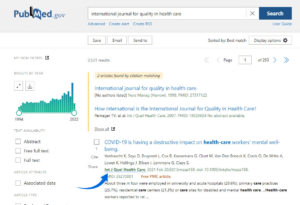AMA Journal Citation | Guide with Examples
To cite a journal article in AMA citation format, you need an AMA reference listing the author’s name, article title (in sentence case), journal name (title case, italicised, and abbreviated), publication year, volume, issue, page range of the article, and DOI if available.
An AMA in-text citation for a journal article consists of the number of the relevant reference, written in superscript. You can also add page numbers in parentheses if you need to refer to a specific part of the article.
| AMA format | Author last name Initials. Article title. Journal Name. Year;Volume(Issue):Page range. DOI or URL. |
| AMA reference | Aponte J, Nokes KM. Electronic health literacy of older Hispanics with diabetes. Health Promot Int. 2017;32(3):482–489. doi:1093/heapro/dav112. |
| AMA in-text citation | Aponte and Nokes1(p485) indicate that … |
Citing an article with a DOI
AMA states that when an article lists a DOI (digital object identifier), you should always include it in your reference. This applies whether you read the article online or in print. The DOI may be shown in the text of the article itself or on the webpage hosting it.
The DOI appears at the end of the reference, preceded by ‘doi’: This text is not capitalised, and there’s no space between it and the DOI number itself. The DOI ends with a period. Don’t present the DOI in the form of a link, and don’t include an access date.
| AMA format | Author last name Initials. Article title. Journal Name. Year;Volume(Issue):Page range. DOI. |
| AMA reference | Byrne J, Pickett K, Rietdijk W, Shepherd J, Grace M, Roderick P. A longitudinal study to explore the impact of preservice teacher health training on early career teachers’ roles as health promoters. Pedagogy Health Promot. 2016;2(3):170–183. doi:10.1177/2373379916644449. |
Citing an online article with no DOI
If you accessed the article online and you don’t see a DOI, you should include the URL instead. The page will often list a ‘stable link’ that shouldn’t change over time; it’s best to use this whenever available, instead of copy-pasting the URL from your browser.
Whenever you include a URL for any source type in AMA style, you should also add an access date. Write the access date right before the URL, as its own sentence starting with ‘Accessed’.
When a DOI is available, include it instead, and don’t add an access date.
| AMA format | Author last name Initials. Article title. Journal Name. Year;Volume(Issue):Page range. Accessed Month Day, Year. URL. |
| AMA reference | Balogh R, Quinn H, Simpson A, Bond S. A comparative analysis of six audit systems for mental health nursing. Int J Qual Health Care. 1998;10(1):43–52. Accessed September 12, 2022. https://www.jstor.org/stable/45125357. |
Citing a print article with no DOI
When you cite an article that you accessed in print, you should still list a DOI if one is indicated. If not, though, you can simply omit this part, ending the reference with the article page range.
| AMA format | Author last name Initials.Article title. Journal Name. Year;Volume(Issue):Page range. |
| AMA reference | Jackson MN, LoGerfo JP, Diehr P, Watts CA, Richardson W. Elective hysterectomy: A cost-benefit analysis. Inquiry. 1978;15(3):275–280. |
Journal name abbreviations
AMA citation format requires you to always use standard abbreviations for the names of journals in your references. The abbreviated journal name is presented in italics, with a period at the end (but no periods at the end of each abbreviated word).
The standard abbreviations are the ones used in the National Library of Medicine database. To check the correct abbreviation for a journal, you can search for it (or for the name of the particular article you’re trying to cite) in the database.
For example, in the screenshot below you can see the correct abbreviation for the journal searched for: ‘Int J Qual Health Care’.
Frequently asked questions
Cite this Scribbr article
If you want to cite this source, you can copy and paste the citation or click the ‘Cite this Scribbr article’ button to automatically add the citation to our free Reference Generator.
Caulfield, J. (2022, September 16). AMA Journal Citation | Guide with Examples. Scribbr. Retrieved 24 June 2025, from https://www.scribbr.co.uk/ama-referencing/journal-citation-ama/




